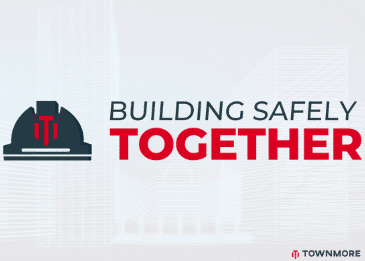- News
- Greener Construction Demands New Materials

Greener Construction Demands New Materials
Traditional construction is changing. Digitisation and decarbonisation are the main drivers of this change, however, there is still a huge amount of confusion around what sustainability means for this industry. In fact, the wider built environment has been criticised in recent months for ‘greenwashing’ its sustainability credentials by promoting activities that fail to make a meaningful positive impact on the environment, while ignoring some of the bigger challenges. For example, an article recently published by the Institution of Mechanical Engineers (UK) refers to foliage on high-rise buildings as “a fig leaf for construction’s footprint problem”. You can read this article in full here:
To be clear, trees and plants are crucial in urban settings as they absorb noise and remove pollution from the air. The positive physical and mental health impacts of greenery on city and building occupants have been well documented over the past decade or more. However, the main thrust of the article above is that no building can claim to be truly green unless it has been built using sustainable materials or construction methodologies.
It is accepted that the building sector accounts for close to 40 percent of global C02 emissions. Given Ireland and indeed the UK’s agreed targets to achieve net zero by 2050, the industry needs to achieve cumulative carbon decreases of approximately 6 percent year-on-year. This is a substantial ask, but it also presents a substantial opportunity. The green buildings market is expected to grow at a rate close to 15 percent per year for each of the next six years.
Right now, innovators are working with the industry to develop more sustainable alternatives to existing high-carbon emitting materials, like concrete, which accounts for 8 percent of all C02 emissions. Potential centrete alternatives may, in the future, be produced from waste or residual materials. Steel is seen as a less problematic material, being both recycled and recyclable. Similarly, timber or cross-laminated timber (CLT) is being explored for more widespread use as it has the dual benefit of lowering the amount of CO2 that a building produces, while also capturing carbon from the atmosphere.
Again, traditional construction is changing. And the industry must be a main driver of this change, however, this change needs to be viewed as a journey of transformation that includes all stakeholders, supported by policymakers. At a team and business level, it is about putting the right sustainability objectives and resources in place, then working collaboratively to achieve the next best step on this journey. As the above article concludes:
“If those at the top are leading the way, then engineers will be encouraged to develop a circular economy mindset. In time, this will breed further innovation.”


